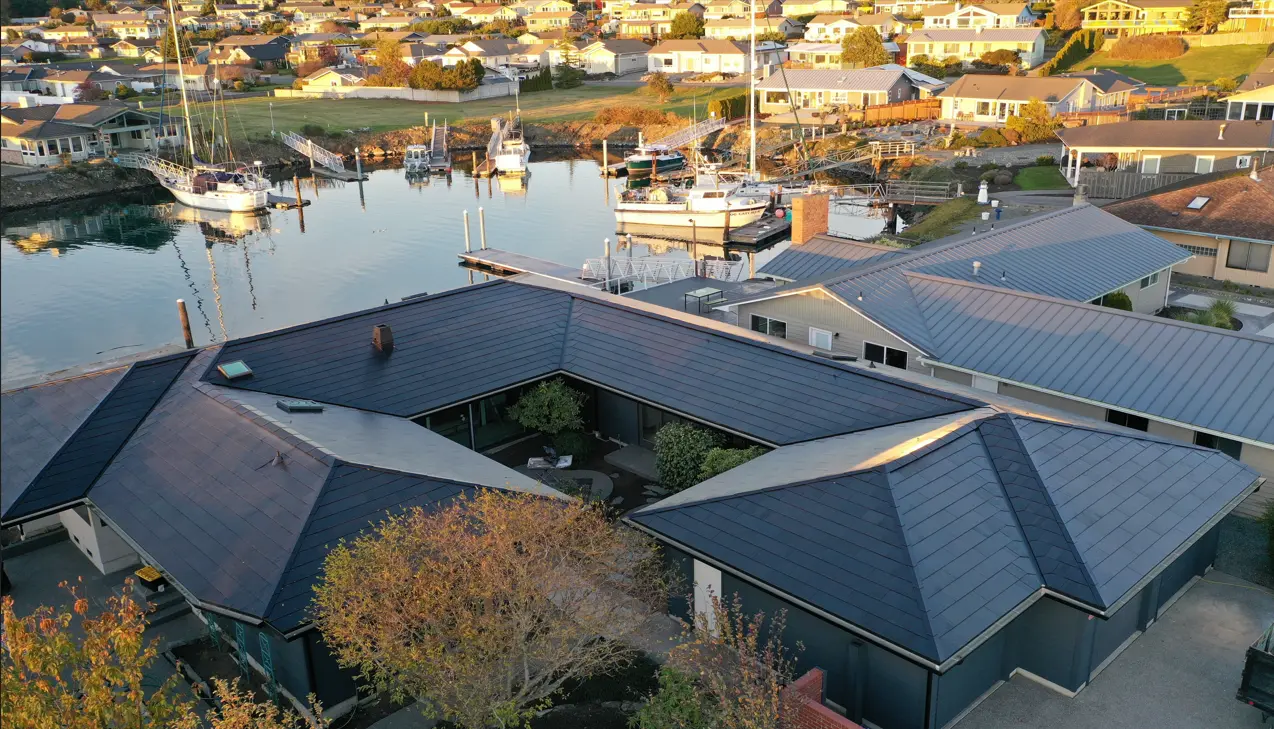Can you Claim your Roof System under the Federal Tax credit when doing Solar?
Switching to solar energy is not only a sustainable choice but can also help you save money in the long run. One common question homeowners have is whether they can claim their roof system under the Federal Tax credit when installing solar panels.
Understanding the Federal Tax Credit
The Federal Tax credit, known as the Investment Tax Credit (ITC), allows homeowners to deduct a significant percentage of the cost of installing a solar energy system from their federal taxes. It’s essential to know the details about which expenses qualify under this tax credit to optimize your savings. Generally, the ITC covers the cost of solar panels, inverters, batteries, mounting and electrical equipment, and professional installation. However, it is crucial to understand how additional roof-related expenses might fit into this equation. For more comprehensive guidelines, reviewing the Residential Clean Energy Credit can be helpful.
An important aspect to note is the recent changing to end the ITC. Originally set to expired in 2032, the tax credit is slated to end December 31st 2025, emphasizing the urgency to take advantage of it sooner rather than later. Homeowners planning solar projects should remain informed about these changes to maximize their credits. Maintaining awareness of current ITC percentages is beneficial for optimizing financial returns.
Qualifying Roofing Expenditures
Not all roof-related expenses qualify for the Federal Tax credit. Understanding the criteria for qualifying enhancements can help you determine if partial or full roof replacements related to your solar panel installation can be included. Typically, expenditures directly tied to the structural support of the solar are not eligible.
While typical roof replacements are generally not covered, enhancements like solar roofing tiles or specially BIPV integrated systems that incorporate solar elements might qualify. A pivotal anchor point is ensuring any roof work is directly linked to the solar installation’s operational need. Homeowners are advised to verify with a tax consultant or delve into the IRS guidelines for clarity on allowable deductions.
While typical roof replacements are generally not covered, there are some exciting options to consider! For instance, Tesla Solar Roofs can actually take advantage of the 30% tax credit because the solar tiles serve as both the roof and the energy system. This means that if you’re installing a roof system that doubles as a solar energy source, you might just hit the jackpot in terms of tax savings! However, for standard roofing work, enhancements like solar roofing tiles or specially designed systems that incorporate solar elements typically do not qualify. Homeowners are encouraged to check with a tax consultant or explore the IRS guidelines for clarity on allowable deductions. It’s always better to be informed so you can maximize those savings!
Contrary to what some high-pressure door-to-door sales reps might tell you, you cannot claim the cost of a standard roof replacement under the 30% Residential Clean Energy Credit. According to IRS guidelines, traditional shingles, deck boards, and rafter replacements aren’t eligible—they serve a structural role, not a solar role energy.gov+11irs.gov+11reddit.com+11. Only building-integrated photovoltaic (BIPV) roofing like solar shingles or solar roof tiles—which both generate electricity and act as roofing material—are eligible.
To put it bluntly: if you’re told that replacing your whole roof qualifies for the credit, that’s misinformation at best—and could lead to trouble if you act on it. Always verify with IRS Form 5695 instructions or seek advice from a qualified tax pro before signing any deal that banks on this credit.
Installation Integration Insights
The integration of solar panels with your roofing system needs to be strategically planned. Collaborating with experienced contractors who can ensure your installation meets the necessary standards for tax credit eligibility is crucial. Selecting a contractor familiar with both roofing and solar installations can help streamline the process and ensure compliance with tax credit requirements.
Working with trusted professionals like Pinnacle Roofing Professionals can make a significant difference in optimizing your investment. Ensuring that they follow best practices and industry standards not only enhances performance but also minimizes risk. Pinnacle Roofing Professionals, along with other contractors who provide comprehensive services in these fields, can be invaluable partners in your solar journey, facilitating both installation and successful tax credit application.
Documentation Requirements
Proper documentation is key when claiming the Federal Tax credit. Save all invoices, installation certifications, and any related paperwork to ensure a smooth process during your tax season. Being meticulous in keeping a detailed account of your solar expenses and relevant paperwork will facilitate seamless verification if queried by tax authorities.
It’s advisable to organize these documents in alignment with the IRS standards and guidelines. This attention to detail not only serves in tax filing but is a good practice for maintaining accurate home improvement records. Consulting with your tax professional and aligning with official IRS documentation requirements can provide peace of mind and ensure compliance.
Assessing Financial Benefits
Conducting a thorough financial analysis of your solar investment, from installation costs to potential savings from the Federal Tax credit, will help you understand the long-term benefits of your decision. By evaluating the initial costs versus the long-term savings on energy bills and tax credits, homeowners can make informed decisions about their solar investment.
Besides the immediate savings from credits, reduced energy bills contribute significantly to the return on investment. Calculate your expected savings using tools like solar calculators provided by reputable sites. Engaging with professionals for a detailed solar assessment can provide insight into realistic expectations and guide future energy efficiency decisions.


Queen Anne Solar, Energy Storage & Roof Project
Seattle, WA